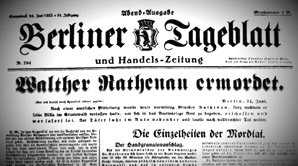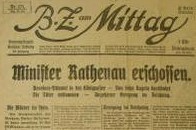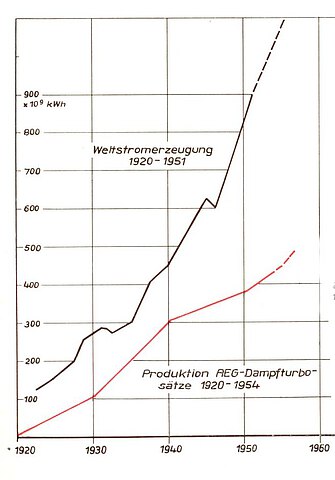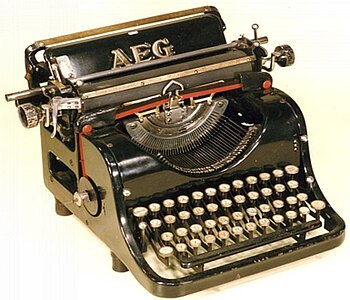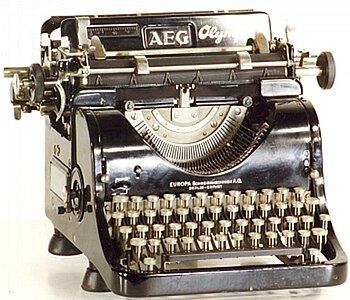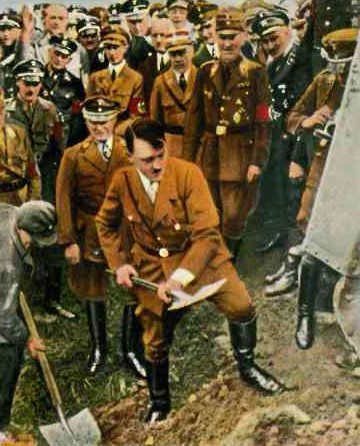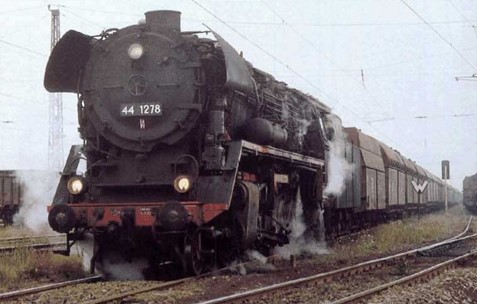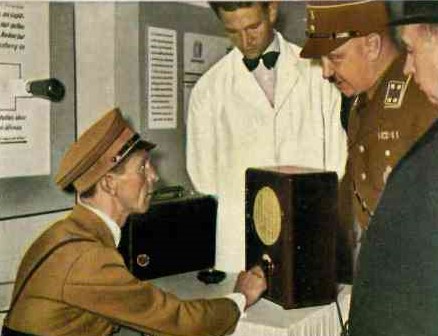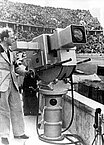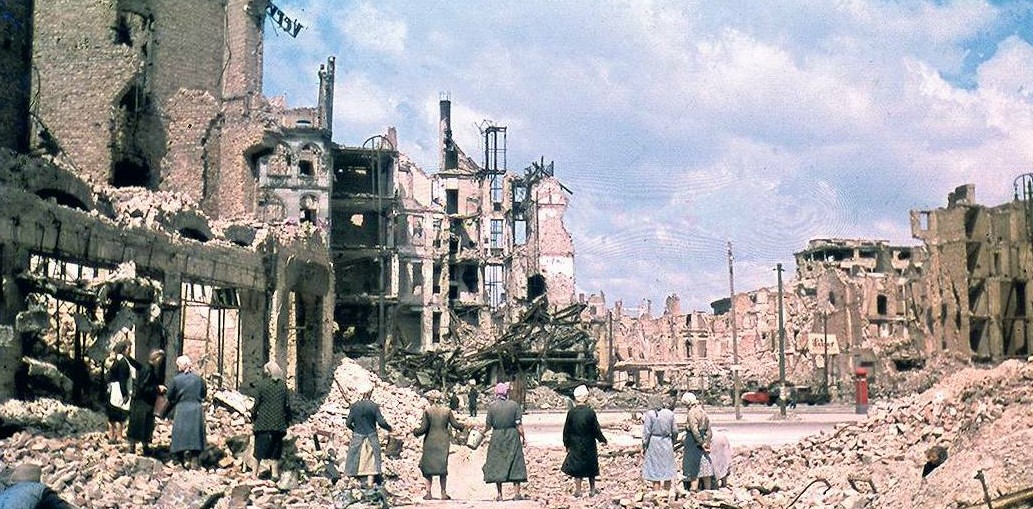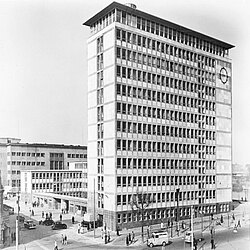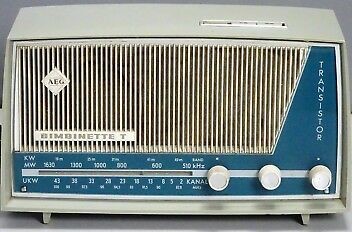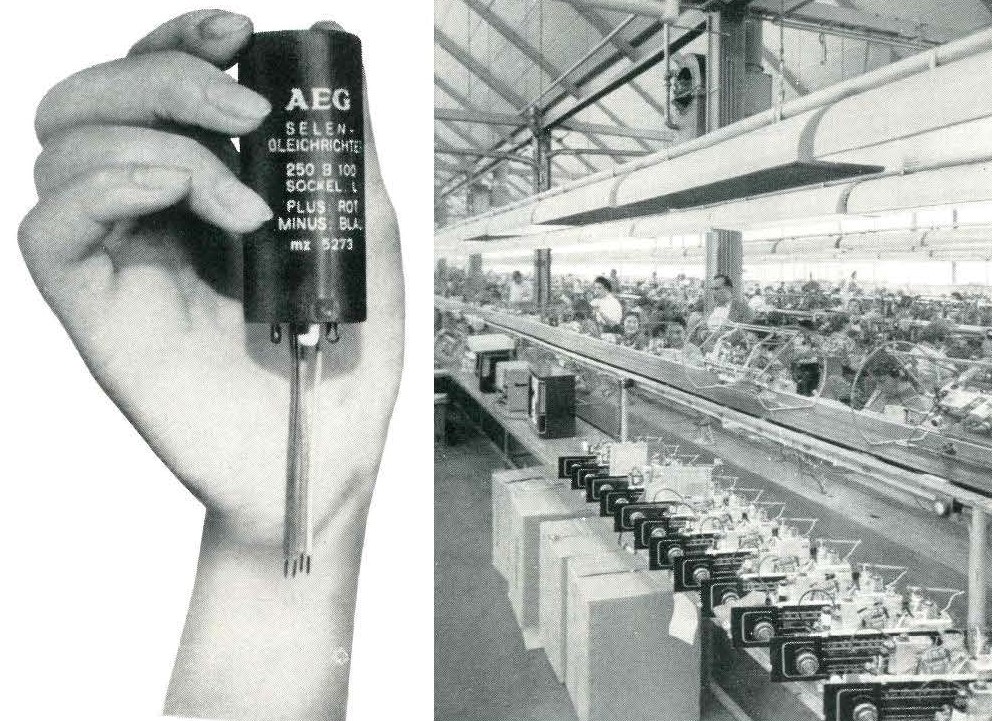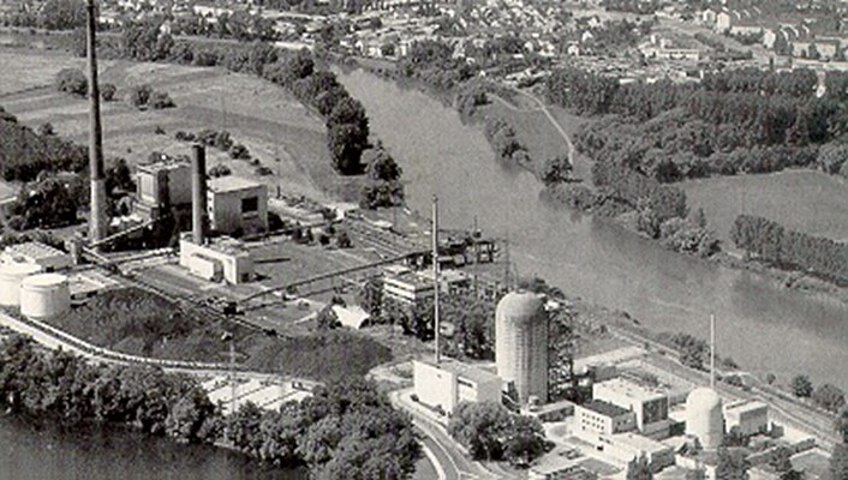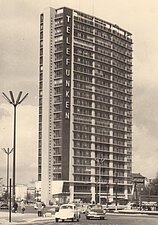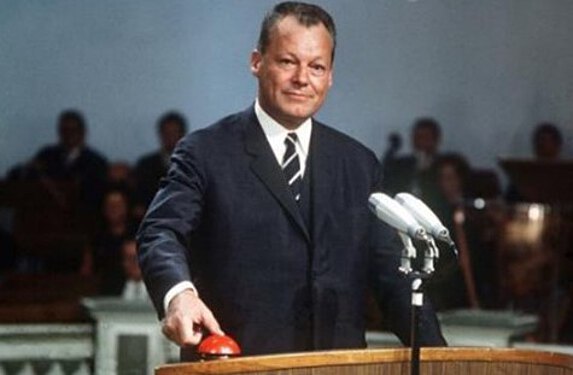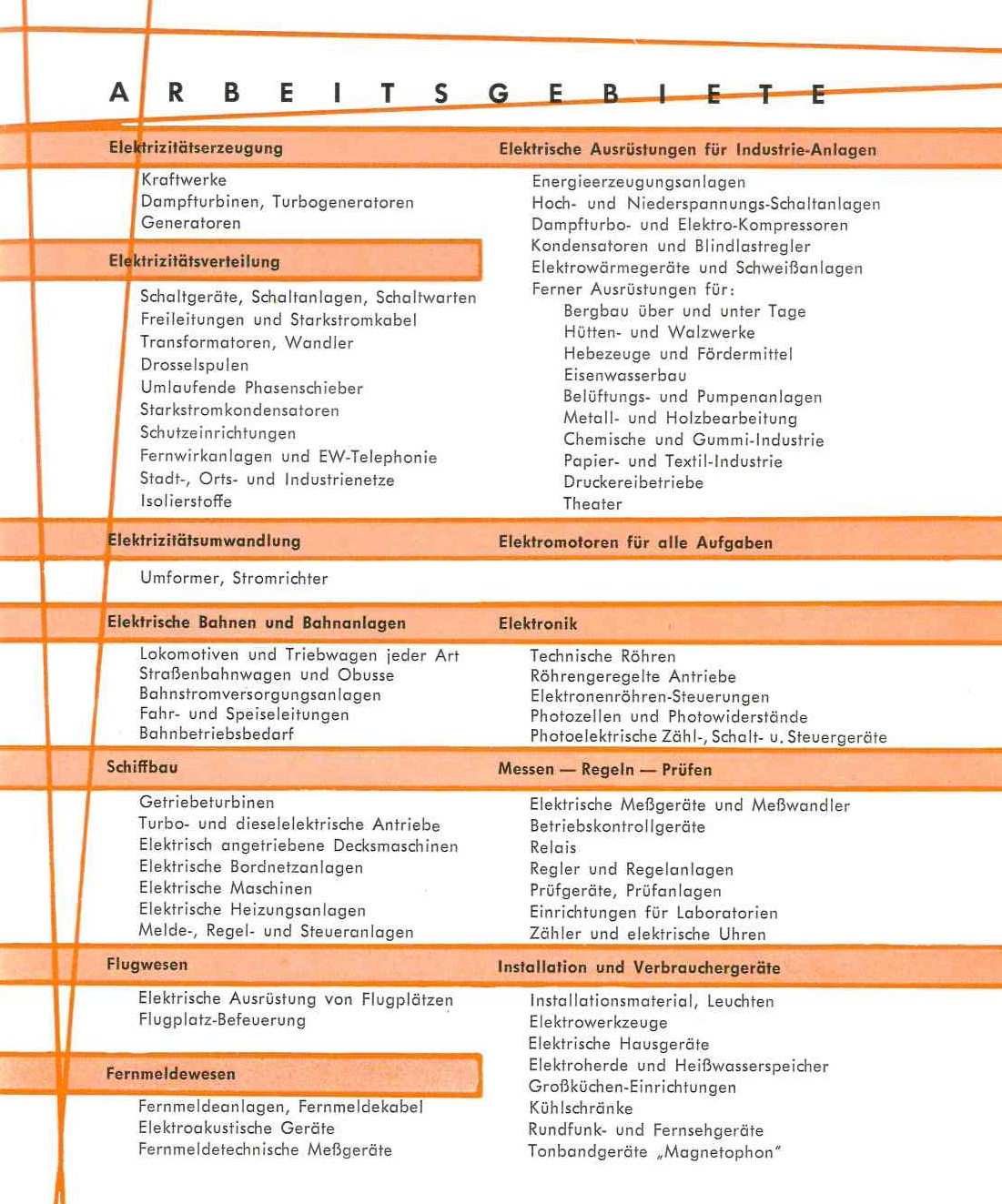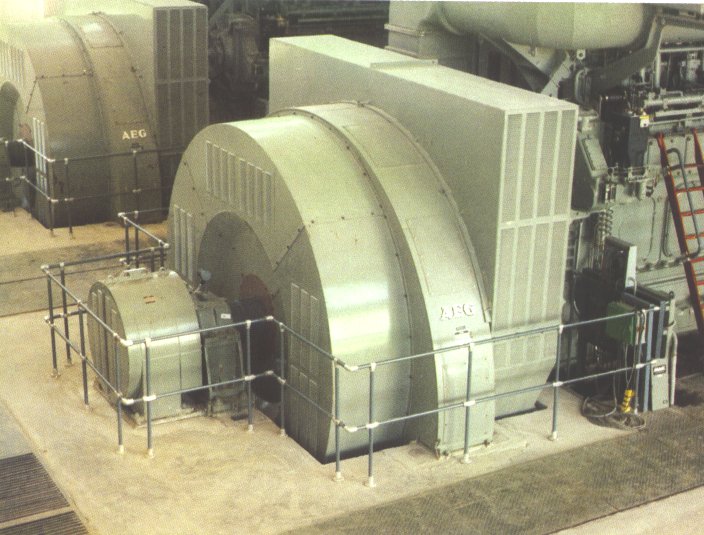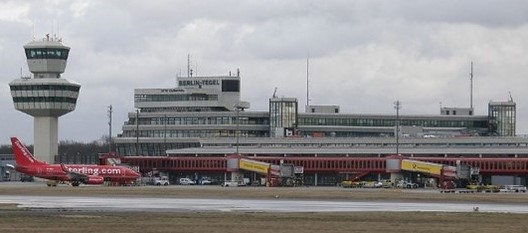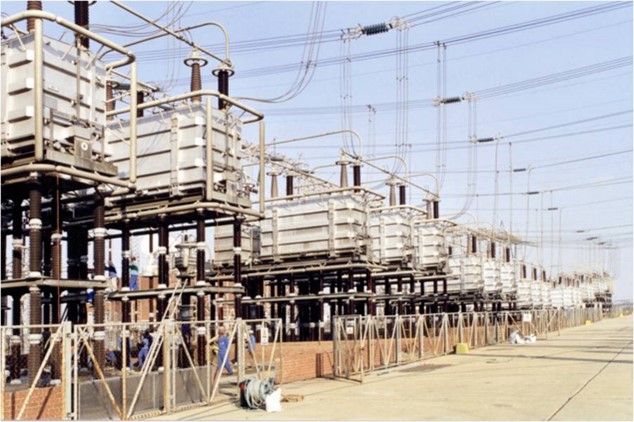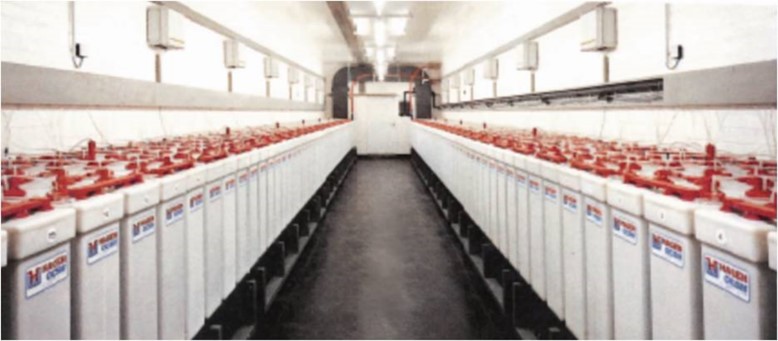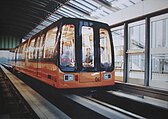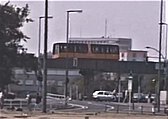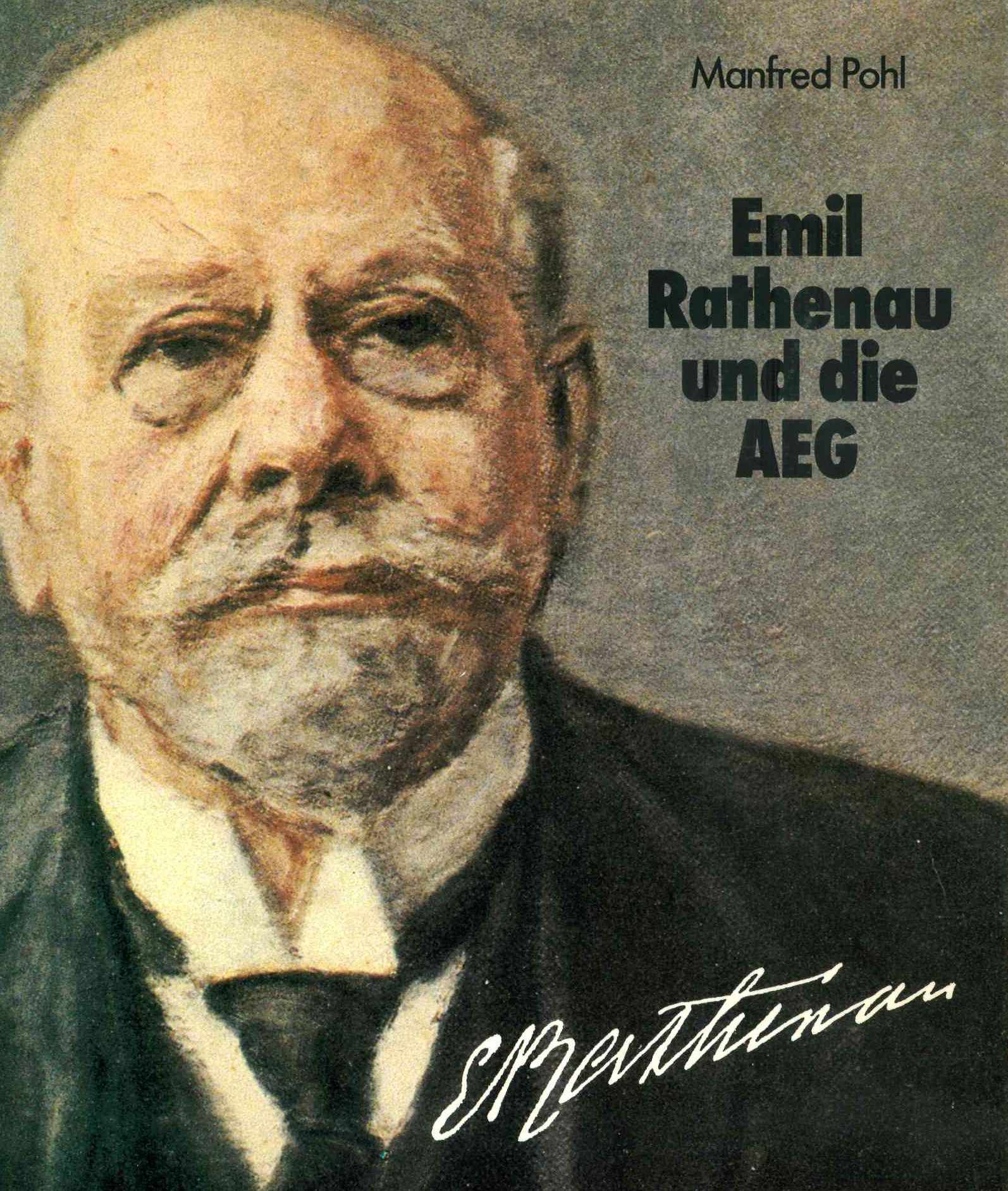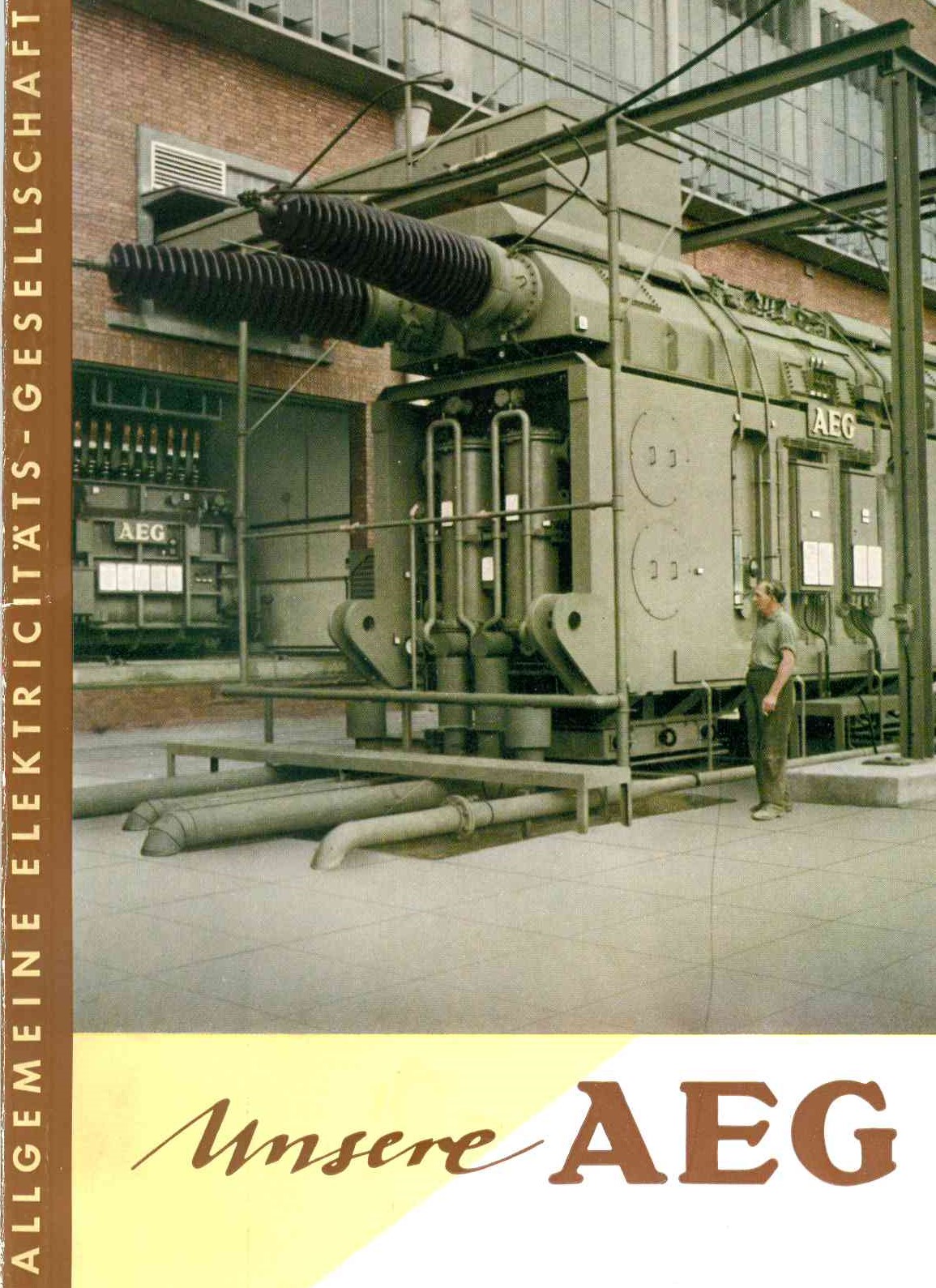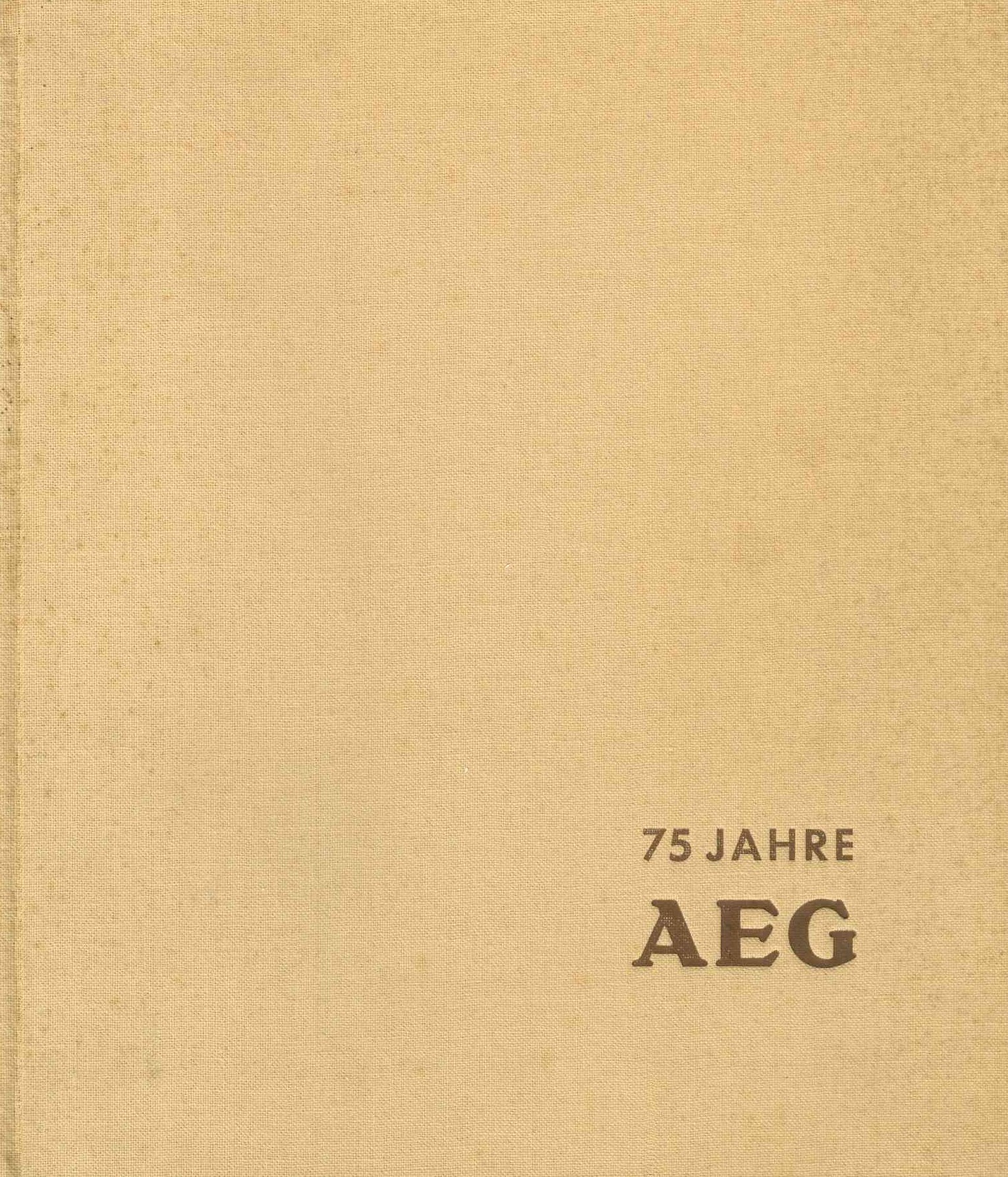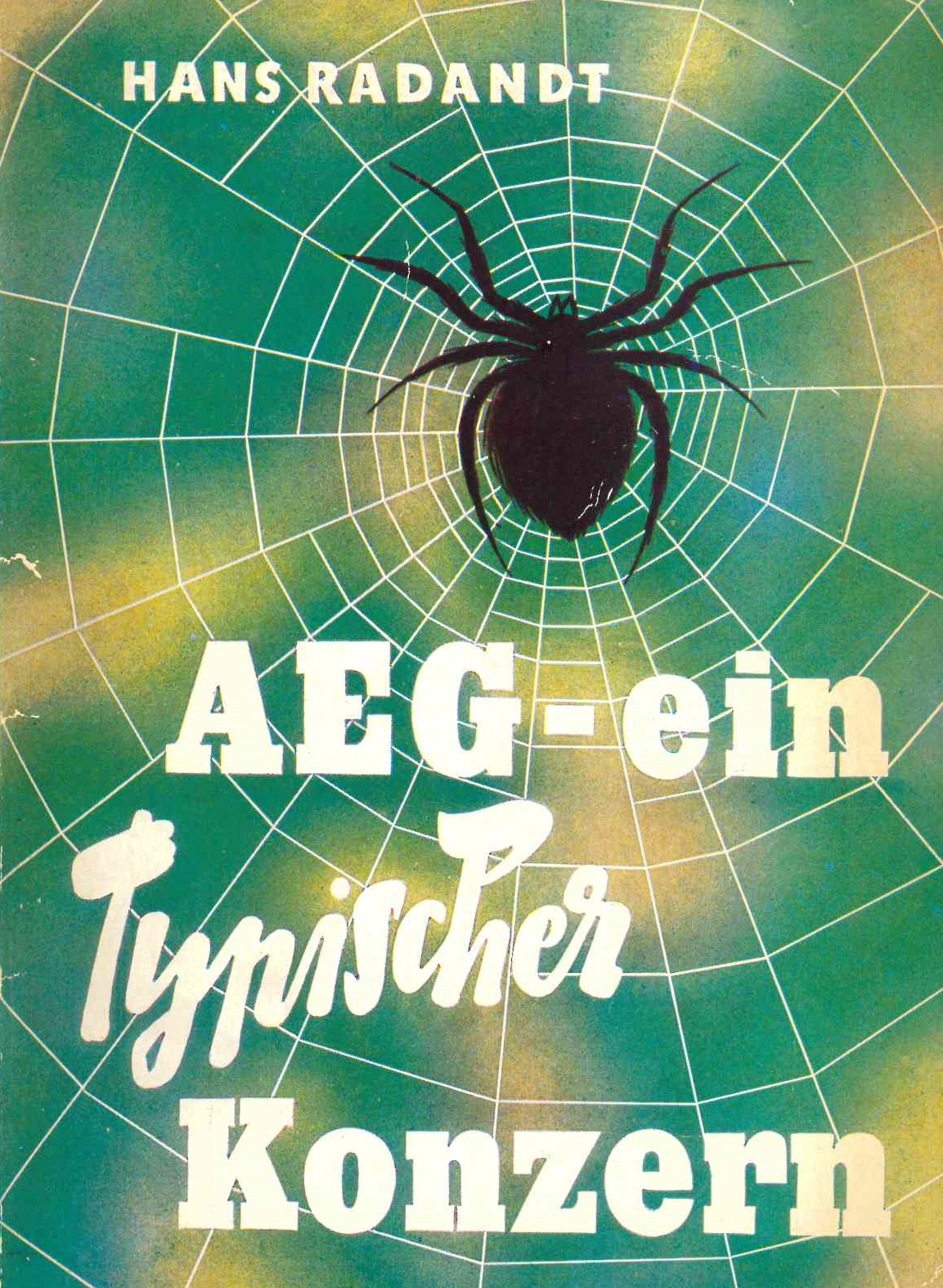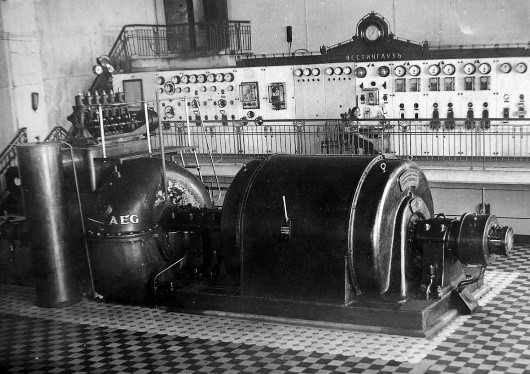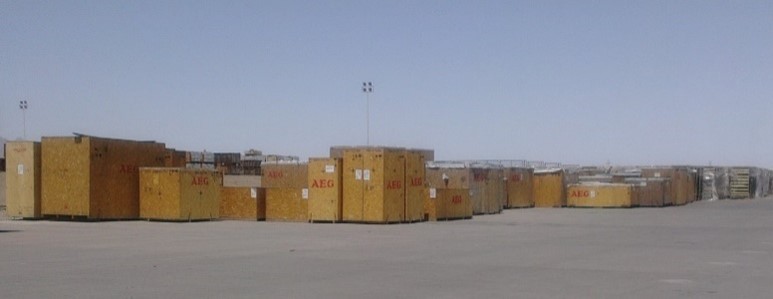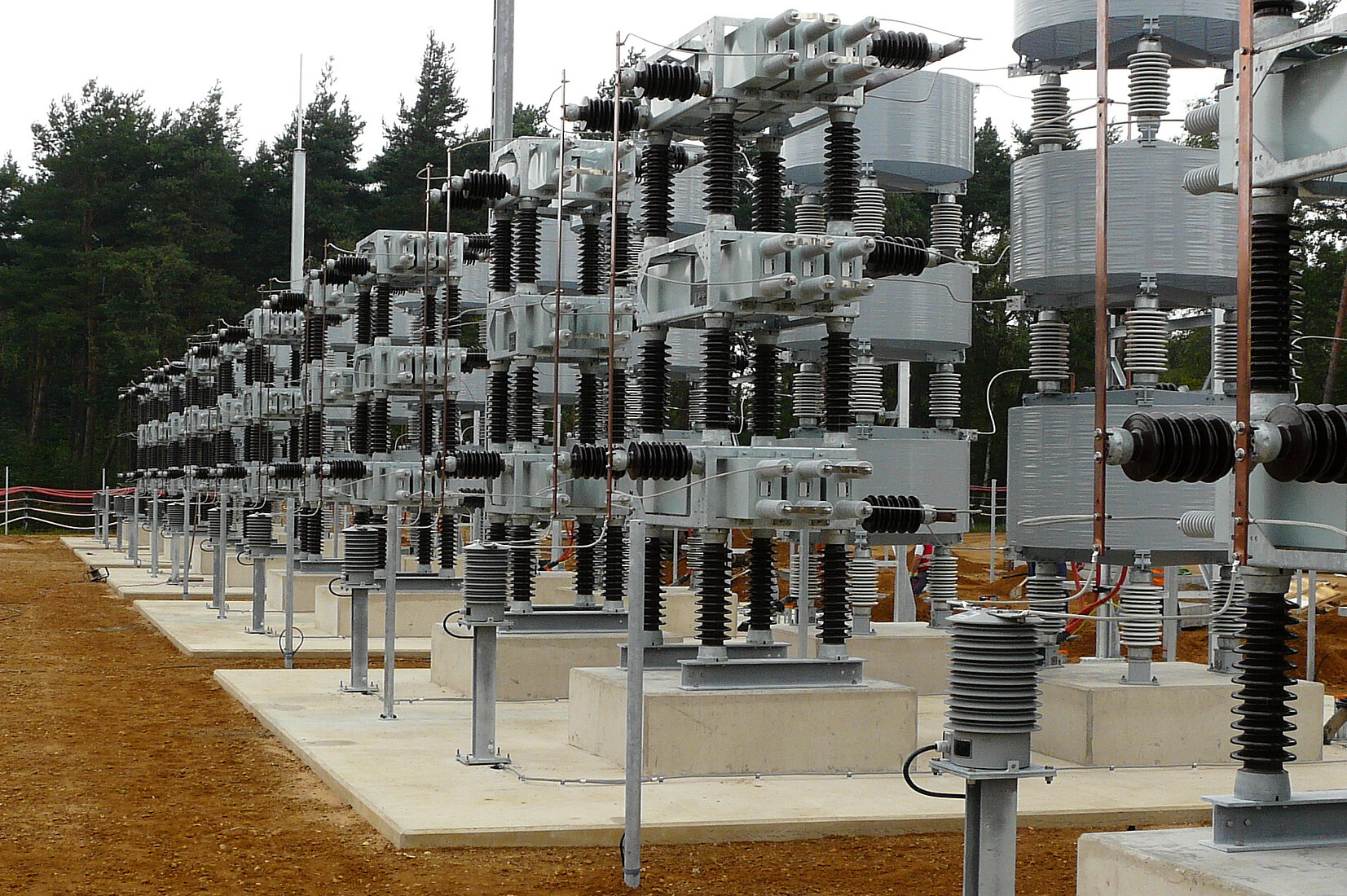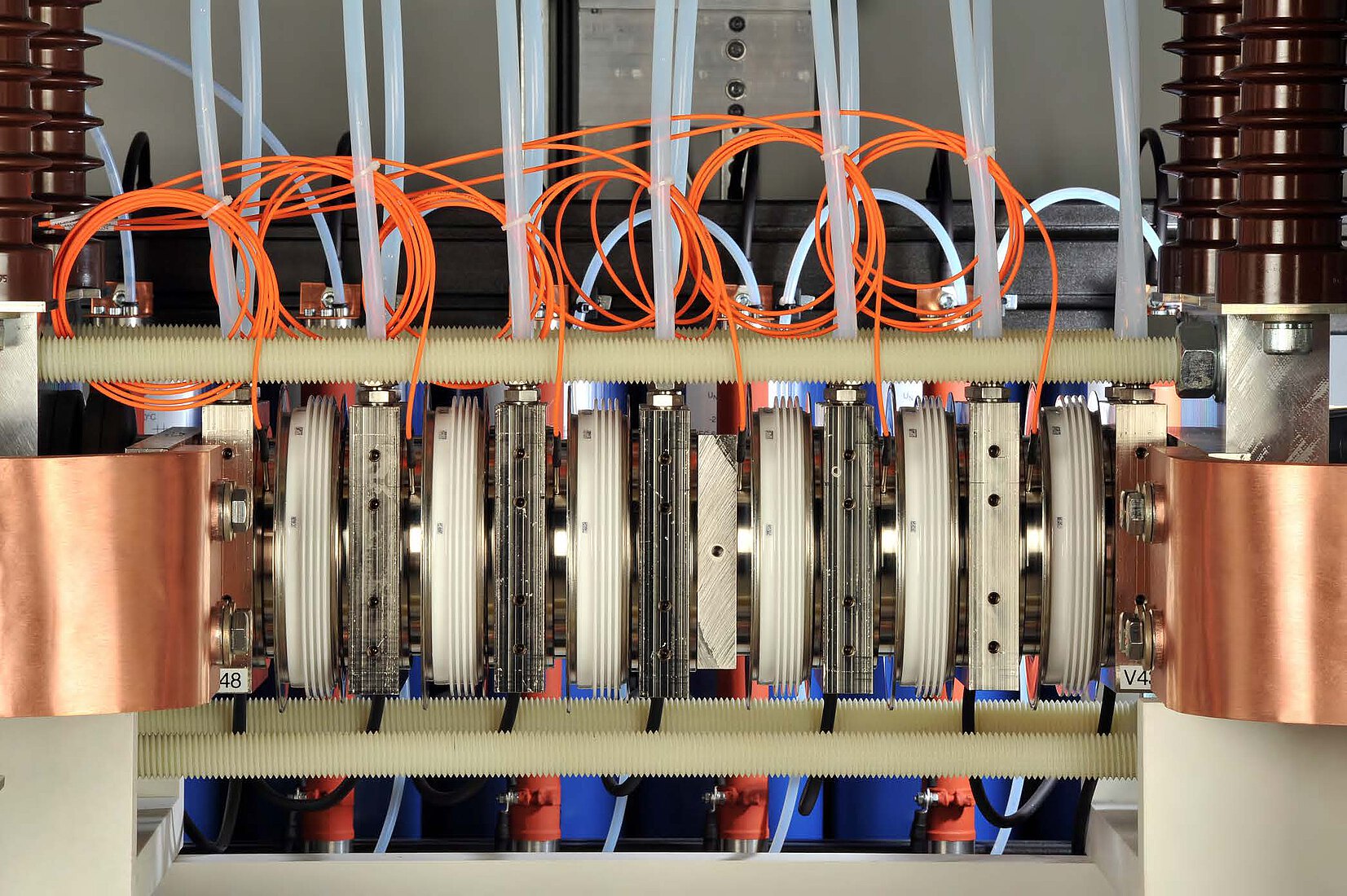The history of AEG
- AEG's founding phase in the momentum of electrification
1800
1800 | Electrical engineering began in the 19th century. In the second half of the 19th century, Emil Rathenau helped electrotechnical inventions to industrialized series maturity, as can be read in the small chronicle of AEG provided. Read more >>
1873
1873 | Although electrical engineering still plays a subordinate role at the 1873 World Exhibition in Vienna, Emil Rathenau is inspired by the advances in electrical engineering presented there. On display were arc lamps, direct current motors, dynamo machines and systems for direct current transmission. Read more >>
1881
1881 | The Allgemeine Elektricitäts-Gesellschaft with its now world-famous trademark AEG goes back to Emil Rathenau. A film about the history of AEG was produced by today's AEG Industrial Engineering Aktiengesellschaft and can be seen here >> in this movie produced by AEG . Read more >>
1882
1882 | According to Emil Rathenau's far-sighted ideas, Edison's improved light bulb was to significantly advance the new electric street lighting of the time. He succeeds in acquiring the rights to commercially exploit Edison's patents in Germany.
1883
April 19, 1883 | The Deutsche Edison Gesellschaft für angewandte Elektricität (DEG) is founded. Convinced of the benefits of electric lighting, banks willingly provide loans. Equipped with an initial capital of five million Reichsmarks, the foundation stone is laid for a success story that will shape the electrotechnical industrial age. Tireless diligence, persistent determination and a scientific spirit of research are indispensable.
Mai 1884
May 8, 1884 | DEG founds its first associated company, Städtische Elektricitäts-Werke AG zu Berlin (A.G.StEW), with a share capital of three million marks. A.G.StEW later trades under the name Bewag, Berliner Städtische Elektrizitätswerke Akt.-Ges, until the company is finally absorbed into today's Vattenfall Group.
August 1884
August 12, 1884 | A.G.StEW enters into the concession agreement with the city of Berlin and thus takes over the task of supplying electricity to Berlin. Central stations such as the first thermal power station in Germany are built in Markgrafenstraße in 1885. The acquired concession entitles the company to lay cables in public streets and obliges it to supply customers with sufficient electricity.
September 1884
September 13, 1884 | At the Berlin location Unter den Linden/ Friedrichstraße 85, DEG puts the first block station with a capacity of 100 kW direct current and a voltage of 100 V into operation. The Café Bauer, adjacent stores and restaurants are supplied with electricity.
1885
1885 | DEG is the first company in German industry to start setting up sales offices in Germany and abroad (first sales office: Munich 1885, first foreign office and first foreign company: Madrid 1889).
August 1885
August 15, 1885 | Built by DEG, the first public power station (first power plant) in Germany goes into operation in Berlin at Markgrafenstraße 44. Six steam engines, each with a good 100 kW (150 HP), drive the generators. Just under a year later, a second power station of comparable size is built in Mauerstraße. The customers are the Königliches Schauspielhaus and the Reichsbank. Two power stations, two separate grids. The two grids are connected in 1887.
1885/1886
1885 | From 1883 as an authorized signatory, 1886 as a deputy member of the Management Board and 1915 as Chairman of the AEG Management Board, Felix Deutsch worked tirelessly to sharpen the sales structures and, in close cooperation with Siemens, pushed for the streamlining of the market.
1886
1886 | The municipal electricity works are not yet operating profitably. However, municipalization or urbanization, as envisaged by the city of Berlin, ... read more >>
Mai 1887
May 23, 1887 | DEG is renamed AEG (Allgemeine Elektricitätsgesellschaft). The name AEG soon becomes one of the best-known brands in the world.
- AEG factories shape industrialization
Oktober 1887
1887 | AEG takes over the management of A.G.StEW and founds Berliner Elektricitäts-Werke (BEW). Managing directors are Emil Rathenau, Oskar von Miller and Felix Deutsch (1884-1964). Read more >>
1887-1895
1887 to 1895 | In the 1886/1887 building at Schlegelstraße 26/27 in Berlin ... more >>
1888-1890
1888 to 1890 | Under the direction of architect Paul Tropp, AEG begins construction of its "Apparatefabrik". Read more >>
1888
1888 | Entry into the "construction of electric railroads" business. Read more >>
1889
1889/90 | Michail von Dolivo-Dobrowolsky (1862-1919), the "father of three-phase technology" and long-time chief designer at AEG, invents the squirrel-cage asynchronous machine in 1889 and the three-legged three-phase transformer in 1890. Read more >>
1891
1891 | AEG builds a complete electric streetcar network and system in Halle an der Saale. It is the first of its kind in Europe. By mid-1896, 34 streetcars were already in operation or under construction, rising to 70 in 1900 with 1,475 km of road and 2,700 motor cars.
25. August 1891
1891 | On the occasion of the International Electrotechnical Exhibition in Frankfurt am Main, the first long-distance transmission of electrical energy with high-voltage three-phase current of 20,000 V over 176 km, from Lauffen am Neckar to Frankfurt am Main, is achieved with an AEG system. This Frankfurt exhibition proves that electricity can be transported over long distances with low line losses. A regional construction of power plants is possible. Read more >>
1892
1892 | Start of production of own household appliances. Who doesn't know the AEG fans, irons and kettles? The list goes on and on. The right appliance for every need.
1895
1895 | AEG builds Germany's first three-phase power plant, the Kraftwerk Oberspree. Industrial companies are acquired as the main customers.
1896
1896 | KWO stands for Kabelwerk Oberspree. On the industrial site in Oberschöneweide (Elektropolis), conveniently located on the River Spree, the planned cable production gets underway. Read more >>
1897
1897 | Start of Nernst lamp production following the invention of chemist Professor Walther Nernst (1864-1941) in 1897. The Nernst incandescent lamp is more efficient than the carbon filament lamp. The filament, called the Nernst pin, contains mixtures of zirconium and yttrium oxide.


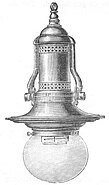
1899
1899 | Walther Rathenau. The more electrification takes place, the more power plants are needed to ensure the supply of electricity. Walther Rathenau, Emil Rathenau's elder son, is appointed to the Board of Management in 1899. An independent department is created for the power plant business, which he is responsible for from 1899.
1899-1901
1899-1901 | The Kraftwerk Moabit is built and commissioned as a three-phase power station according to plans by Franz Schwechten. It supplies electricity at a voltage of 6 kV and supplies a larger area. By the turn of the century, AEG had built around 248 power stations with a total output of 210,000 HP in Germany and abroad.
- AEG achieves worldwide fame at the turn of the century
Century change
Around 1900 | At the turn of the century, AEG already has 140 of its own agencies and subsidiaries worldwide, unique expertise and numerous factories in and around Berlin. Erich Rathenau (1871-1903) and Walther Rathenau join the AEG Management Board. In May 1902, Walther Rathenau resigns from the Management Board and becomes managing director of the affiliated Berliner Handels-Gesellschaft (BHG) until 1907. He joins the Supervisory Board of AEG in 1904 and becomes its Chairman in 1912.
1900
1900 | Invention of the hair dryer (1908 term "Fön" as word/figurative mark of AEG Hausgeräte GmbH, Nuremberg, registered word/figurative mark FOEN since 1941).
1901
1901 | Foundation of Neue Automobil-Gesellschaft m.b.H. (NAG; from 1915 Nationale Automobil-Gesellschaft). Production took place in "Elektropolis" in Berlin-Oberschöneweide.
1903
May 27, 1903 | AEG and Siemens & Halske found the Gesellschaft für drahtlose Telegraphie m.b.H. (Telefunken) on the instructions of Kaiser Wilhelm II, who wants to prevent the army and navy from using different radio technology systems. In April 1923, the company is renamed Telefunken Gesellschaft für drahtlose Telegraphie m.b.H. (company name until 1955).
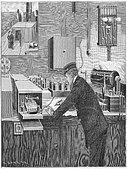
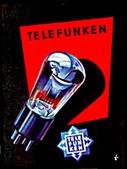
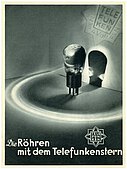
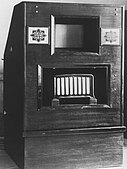

Oktober 1903
October 27, 1903 | An AEG three-phase high-speed railcar sets a new world record with a speed of 210.2 km/h - in direct competition with Siemens & Halske - on the test track of the Royal Prussian Military Railway between Marienfelde and Zossen. In 1911, Germany's first electrified long-distance railroad line is put into operation between Bitterfeld and Dessau.
- Peter Behrens gives AEG its own signature
1907–1914
1907-1914 | AEG hires one of the most progressive artists of his time, the painter, typographer, graphic designer and architect Peter Behrens (1868-1940), as an artistic advisor. The inscription on the architrave of the Reichstag building and today's Bundestag in Berlin: "DEM DEUTSCHEN VOLKE" ("TO THE GERMAN PEOPLE") was also created by none other than AEG designer Peter Behrens. Read more >>
1912
1912 | Before the First World War, AEG is the largest German company in the electrical industry - far ahead of Siemens.
1913
1913 | Locomotive construction picks up speed at the northern Berlin city limits in Hennigsdorf. AEG builds steam and electric locomotives, electric carts, ticket printers, electrotechnical equipment and numerous other electrical appliances on its 1.7 million square meter factory site. In 1913, AEG receives its first major order to supply electric mainline locomotives.
April 1913
April 14, 1913 | Delivery of the first electric locomotive.
1914
1914 | The AEG industrial site on Wilhelminenhofstrasse and Ostendstrasse in Berlin-Oberschöneweide is further expanded. Since 1895,"Elektropolis" has been taking shape step by step. Read more >>
- 1914 - 1918 | AEG in the First World War
1915
June 20, 1915 | Emil Rathenau dies at the age of 76. On the left of the picture is the Rathenau family grave designed by the architect Alfred Messel in the Waldfriedhof cemetery in Berlin-Oberschöneweide, today an honorary grave of the City of Berlin. In the same year, his son Walther takes over the presidency of AEG. In the midst of the turmoil of the First World War, he concentrates on armaments production, thereby compensating for the decline in sales on foreign markets at the beginning of the war.
Oktober 1915
October 1, 1915 | The Magistrate of Berlin takes over the BEW power plants from AEG and large parts of the workforce. The company is renamed Städtische Elektricitätswerke Berlin (StEW).
Dezember 1915
December 1915 | The AEG power plant Golpa-Zschornewitz near Bitterfeld goes into operation. With an output of 128 MW, it is ... more >>
1917
1917 | An AEG aircraft sets the world altitude record at 6,500 meters. The aforementioned AEG production site in Hennigsdorf near Berlin even has its own airfield. This is where AEG tests its aircraft, especially large transport planes.
1918
1918 | Construction of the first geared marine turbine and start of construction of steam locomotives.
Herbst 1918
Autumn 1918 | Bulgaria and Austria demand special peace. The fighting continues relentlessly until the sailors' uprising in Kiel spreads to other cities on November 3, 1918. The end of the First World War is imminent. The AEG Group has to "retool", from the armaments industry to the peacetime economy. Without the Reichswehr as a major customer, AEG's automobile and aircraft production have no secure future. The foreign markets important to the Group have largely collapsed.
November 1918
November 9, 1918 | Revolution in Berlin. The Kaiser has abdicated. With the formal abdication of Kaiser Wilhelm II on November 28, 1918, the Prussian-German monarchy comes to an end. After the end of the war, the Group is hit by a severe slump in sales, plant closures, labor disputes, material shortages and currency devaluation.
- 1919 - 1932 | AEG during the Weimar years
1919
1919 | Foundation of OSRAM Werke GmbH KG by AEG, Siemens & Halske and Deutsche Gasglühlicht AG (Auer-Gesellschaft).
1921
1921 | Walther Rathenau becomes Reich Minister for Reconstruction in the Weimar Republic. He is a member of the left-liberal German Democratic Party (DDP), which represents political liberalism. Rathenau, at the same time both diligent and prudent, wants to ... read on >>
Januar 1922
January 31, 1922 | Walther Rathenau is appointed Reich Foreign Minister. His efforts to ease the Versailles Peace Treaty bear fruit. Read more >>
Juni 1922
24 June 1922 | Walther Rathenau is shot dead in the street by two young officers from the radical right-wing "Organization Consul" (OC). He was one of the most talented statesmen and skillful business leaders of the Weimar Republic.
1923
October 29, 1923 | The first German radio station goes into operation with Telefunken equipment in Berlin's Vox-Haus.
1924
1924 | AEG sales exceed the 500 million Reichsmark. Telefunken begins to develop television. It is the Golden Twenties, which bring an economic upswing in 1924 with the Rentenmark, the Dawes Plan, the Young Plan and the Locarno Treaties.
1925
1925 | Start of construction of the Klingenberg power station, named after AEG board member Georg Klingenberg. 18 years earlier, in 1907, the neighboring Rummelsburg power station went into operation, which was expanded at the same time as the new Klingenberg power station from 1925. Read more >>
1928
August 31, 1928 | The fifth "Great German Radio Exhibition" opens under the Berliner Funkturm, inaugurated in 1926. A highlight of this period is presented there: The television set developed by Telefunken and the physicist August Karolus, the Telefunken-Karolus picture telegraph.
1930
1930 | The AEG typewriters are given the suffix "Olympia". The first Olympia typewriter is built in 1931.
1931
1931 | Kraftwerk West goes into operation. Later, in 1953, in the course of reconstruction after the Second World War, it is named Kraftwerk Reuter in memory of the then Governing Mayor of Berlin Ernst Reuter, who was also Chairman of the Supervisory Board of Bewag. While the Klingenberg power plant supplies the east of the city of Berlin, the Reuter power plant and the neighboring Reuter West combined heat and power plant supply the west of the city with electricity and heating energy. In divided Berlin, the two power plants ... more >>
- 1933 - 1945 | AEG in the Third Reich
1933
1933 | When the Reichstag went up in flames on February 28, 1933, the Weimar Constitution also burned, figuratively speaking. Adolf Hitler had already been appointed Reichskanzler on January 30, 1933. For the Rathenau family, who were of Jewish descent, the Reichstag fire heralded the conflagration of the times to come. Despite all the ambivalence, from AEG's point of view, the years 1933 to 1939 shed a different light than the war years 1939 to 1945. After the seizure of power in 1933, there was soon no AEG factory left that did not produce armaments.
1934
1934 | The German economy undeniably experiences an unparalleled boom in the Third Reich. Adolf Hitler unceremoniously leaves the enormous reparations requirements under the Versailles Peace Treaty unfulfilled, which bring the German Reich to its knees. AEG also benefits from this and, like its competitor Siemens, comes to terms with the National Socialist regime. Hermann Bücher, Chairman of the AEG Board of Management, sees the steadily growing number of armaments orders as brilliant business for AEG. AEG would soon concentrate almost exclusively on armaments production. During the First World War, the military was also the largest customer. It is not unusual for the dialectic to reveal itself only when it is too late.
1935
1935 | "Give us four years, the constitutional period of a Reichstag, and then the country will judge us," Adolf Hitler had confidently proclaimed two years earlier. Halfway through 1935, the interim balance sheet for the AEG Group was also very promising. The Borsig locomotive works were taken over and their locomotive production was relocated to Hennigsdorf. Groundbreaking inventions such as the world's first tape recorder, the Magnetophon K1, are presented at the Great German Radio Exhibition in Berlin.
1936
1936 | Telefunken develops the first electronic television camera (iconoscope camera), the so-called Olympiakanone, for the 1936 Summer Olympics in Berlin.
1938
1938 | AEG builds the first high-performance locomotive.
1941
1941 | AEG buys the Telefunken shares from Siemens & Halske and continues to run the company as a wholly owned subsidiary.
1945
1945 | While Siemens had already learned in 1944 of the Allies' plans to divide up Germany after a victory and therefore relocated many production facilities to the West, the AEG Group laments the loss of almost all its production facilities in 1945. After the Second World War, however, AEG managed to rebuild quickly in West Germany with new, modern factories. For the time being, however, the fate of Germany lies in the hands of three men: Josef Stalin, Harry Truman and Winston Churchill confer at Cecilienhof Palace in Potsdam from July 17 to August 2, 1945.
- AEG Sales Headquarters at Hohenzollerndamm in Berlin
1948 / 1950
After the Second World War, AEG moves into the extensive building complex at Hohenzollerndamm 150 - 152 in Berlin-Wilmersdorf in the British sector of divided Berlin. Read more >>
- 1950 - 1960 | AEG in the German economic miracle
1950
1950 | Since the 1920s, AEG has been producing refrigerators that have been continuously developed to perfection. Continue >>
1951
1951 | The Group headquarters are relocated to Frankfurt am Main, while AEG retains its pro forma headquarters in Berlin.
1953
1953 | The AEG High Voltage Institute is inaugurated at the industrial site in Kassel. After the Second World War, AEG is forced to operate in a divided ... more >>
1955
1955 | Inauguration of the largest bucket wheel excavator in Rhenish deep opencast mining. The increase in coal production depends ...
1956
1956 | Hans Constantin Boden (1893-1970) takes over as Chairman of the Board of Management. Together with Walther Rathenau, he was involved in the negotiations on the Young Plan as early as 1929. During his time as CEO, the first German transistor radio receiver is manufactured.
1958
1958 | Construction of the first German "experimental nuclear power plant" near Kahl am Main. Read more >>
1958
1958 | The slogan "AEG - aus Erfahrung gut" ("AEG - good from experience" ) is used for the first time for AEG domestic appliances. Market launch of the "Lavamat" fully automatic washing machine with the slogan: "Just one touch - and your washing day is over!" Consumer goods such as the "Lavamat" and the "VW Käfer" in particular reflect the years of the economic miracle.
1959
1959 | Telefunken sets new standards with the development of the largest digital computer built in Europe at the time, the Telefunken TR 4 ... read more >>
1960
1960 | The administration of Telefunken GmbH moves into the new high-rise building built on Ernst-Reuter-Platz in West Berlin, right next to the 9-storey Osram building. With an eaves height of 80 meters and 22 floors, the Telefunken Tower is the tallest high-rise building in Berlin until 1965.
- 1963 - 1988 | AEG continues to expand
1963
January 3, 1963 | First demonstration of color television developed by Walther Bruch (1908-1990) at Telefunken using the PAL system (Phase-Alternation-Line).
1965
1965 | AEG-Kanis. More than 40 years have passed since Paul Kanis founded a turbine factory in Dresden together with Herbert Brückner in 1924. Read more >>
Januar 1967
January 1, 1967 | Merger with Telefunken as Allgemeine Elektricitäts-Gesellschaft AEG-Telefunken with headquarters in Frankfurt am Main.
August 1967
August 25, 1967 | Willy Brandt opens the PAL system with a symbolic push of a button at the 25th Great German Radio Exhibition ...
1968
1968 | Foundation of Kraftwerk Union (KWU) by AEG and Siemens (50% share each).
1970
1970 | After the merger with Telefunken, AEG is the twelfth largest electrical company in the world with 178,000 employees. Despite two world wars and the division of Germany, the AEG Group asserts itself as an electrical giant. Read more >>
1972
1972 | After just over 1 ½ years of construction, the AEG diesel generator is completed. With its enormous output of 39,100 kVA ... read more >>
1974
1974 | Berlin-Tegel Airport is opened. AEG is largely responsible for the power supply (emergency diesel generator) and the installation of the electronic systems. Following the opening of the new Berlin Brandenburg Airport (BER) on October 31, 2020 in Berlin-Schönefeld, Berlin-Tegel Airport (TXL) closes a few days later on November 8, 2020 after 46 years of operation.
1977
1977 | High-voltage direct current transmission (HVDC) is the term for ... read more >>
1985
1985 | AEG is now Mercedes. Under the Daimler-Benz Chairman of the Board of Management Werner Breitschwerdt and with the involvement of the then CFO Edzard Reuter ... read more >>
1987
1987 | The lights never go out in West Berlin - AEG builds a technically and economically effective large-scale electrical system (battery storage system) with 20 MW for the Steglitz power plant to store electrical energy and to bridge power plant outages with instantaneous release of energy at any point in time.
- 1989 | AEG in reunified Germany
1989-1991
1989 to 1991 | The test track of the magnetic railroad (M-Bahn) runs from Berlin's Tiergarten district (Kemperplatz) past the Philharmonie and Potsdamer Platz to the German Museum of Technology (Gleisdreieck). It was developed and planned in close cooperation between AEG, the TU Braunschweig and the Berliner Verkehrsbetriebe (BVG). However, the fall of the Berlin Wall on November 9, 1989 suddenly opened up new transportation options. In July 1991, the trial operation was ended.
1994
1994 | Sale of AEG Haushaltsgeräte GmbH with the main plant in Nuremberg to the Swedish Electrolux AG.
1994-1998
1994-1998 | AEG receives the order from Malaysia for the first local rail transport system for the capital Kuala Lumpur, a complete, 27 km long suburban railroad system. Read more >>
1996
1996 | At the beginning of June, the Annual General Meeting of Daimler-Benz AG decides on the possible dissolution ... read more >>
1997
1997 | The extensive company archive and a museum set up by AEG itself are transferred from Frankfurt to the German Museum of Technology in 25 truckloads with 5,000 books, 4,000 shelf meters of files, 350 shelf meters of photographic material, 1,300 films and over 1,000 objects, including a 21-ton steam turbine.
- AEG Industrial Engineering
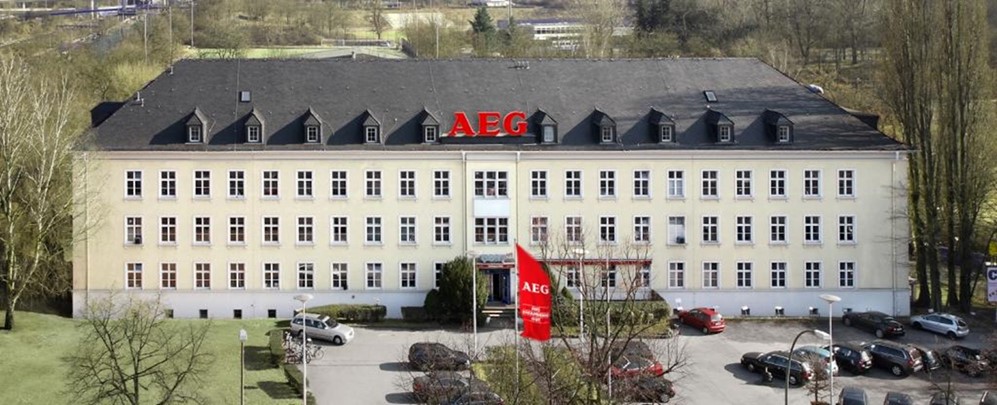
2003
March 3, 2003 | Together with EHG Elektroholding GmbH, the management of AEG Industrial Engineering GmbH decides to devote more attention to the concerns of former AEG customers in the field of AEG industrial engineering. From its headquarters at the traditional location of the AEG industrial plants on Hohenzollerndamm in Berlin, it has since been serving former AEG customers all over the world and sees itself as the legitimate successor to AEG's industrial activities.
- 2008 | AEG – 125 Jahre aus Erfahrung gut
2008
2008 | The AEG steam turbine in the Samar power plant (Russia) is the best example of AEG's proven, long-lasting industrial technology. AEG put it into operation in 1931 and kept it running for over 100 years. During its entire service life of 378,700 hours, its rotor turned 68 billion times.
- AEG stock corporation again
2013
August 15, 2013 | AEG Industrial Engineering GmbH becomes a stock corporation and is entered in the commercial register ... read more >>
2015
2015 | AEG IE's field of work includes the planning and supply of spare parts, the repair and modernization of customer systems as well as the development of energy concepts and the supply of all parts. AEG IE AG takes care of all the concerns of the AEG Group. We take care of your Power Quality®. Read more >>
Today
AEG is the brand name for excitation systems, starting converters, compensation systems, control cabinets, spare parts, services and commissioning. AEG IE AG continues to be a reliable and competent partner for all electrical engineering requirements in industry. Read more >>
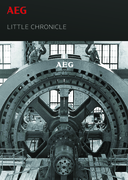
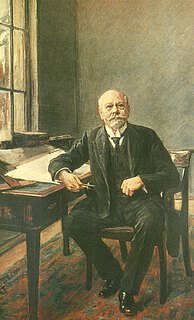


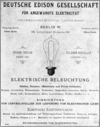
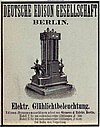
![[Translate to English:] AEG IE AG und Bewag](/fileadmin/_processed_/b/e/csm_Bild6a_9417e6c9c8.jpg)
![[Translate to English:] Heizkraftwerk Wilmersdorf](/fileadmin/_processed_/c/3/csm_Bild6e_c4da0cb24b.jpg)
![[Translate to English:] Kraftwerk Wilmersdorf](/fileadmin/_processed_/c/b/csm_Bild6f_4c22c2cb3d.jpg)
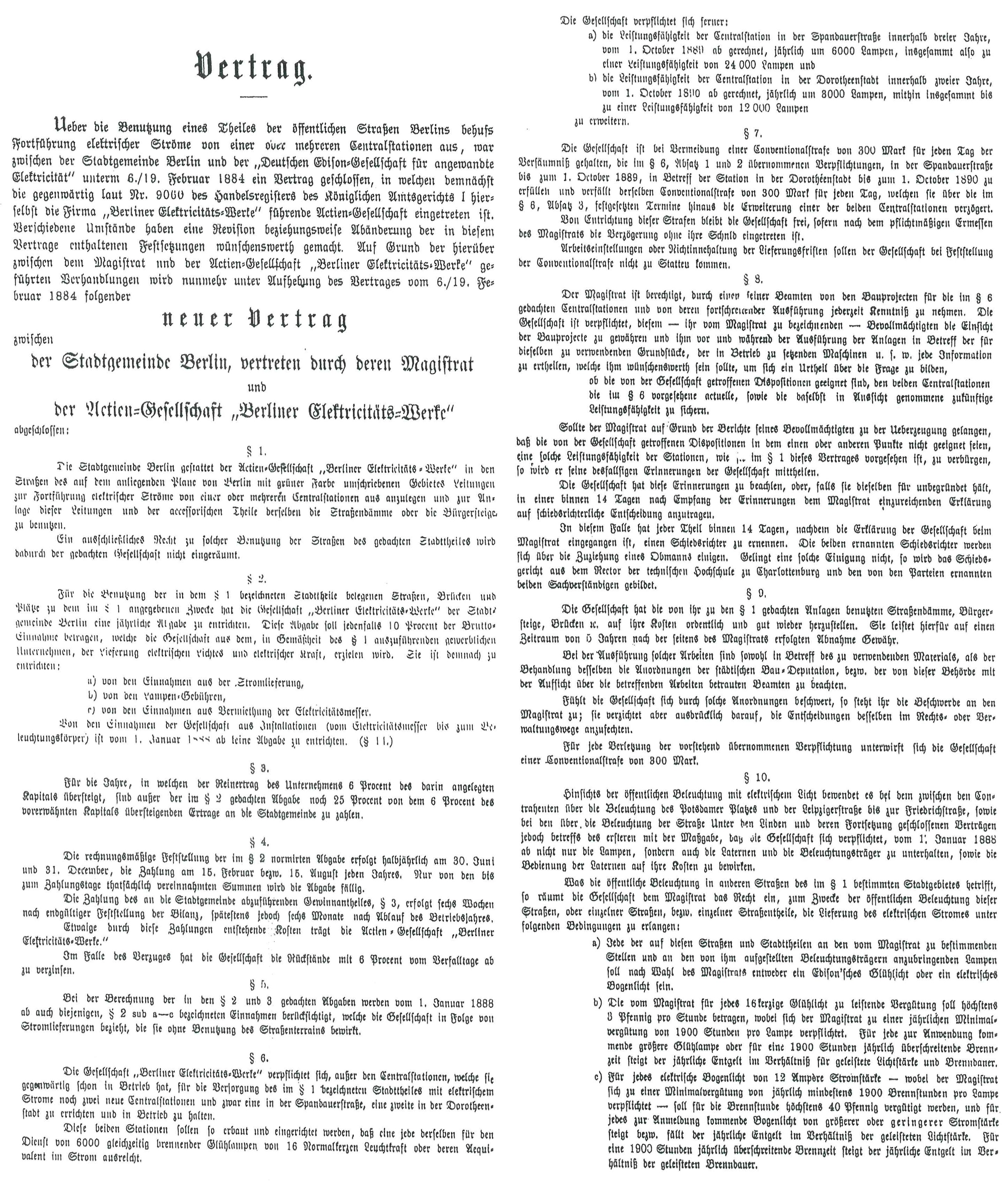


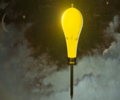



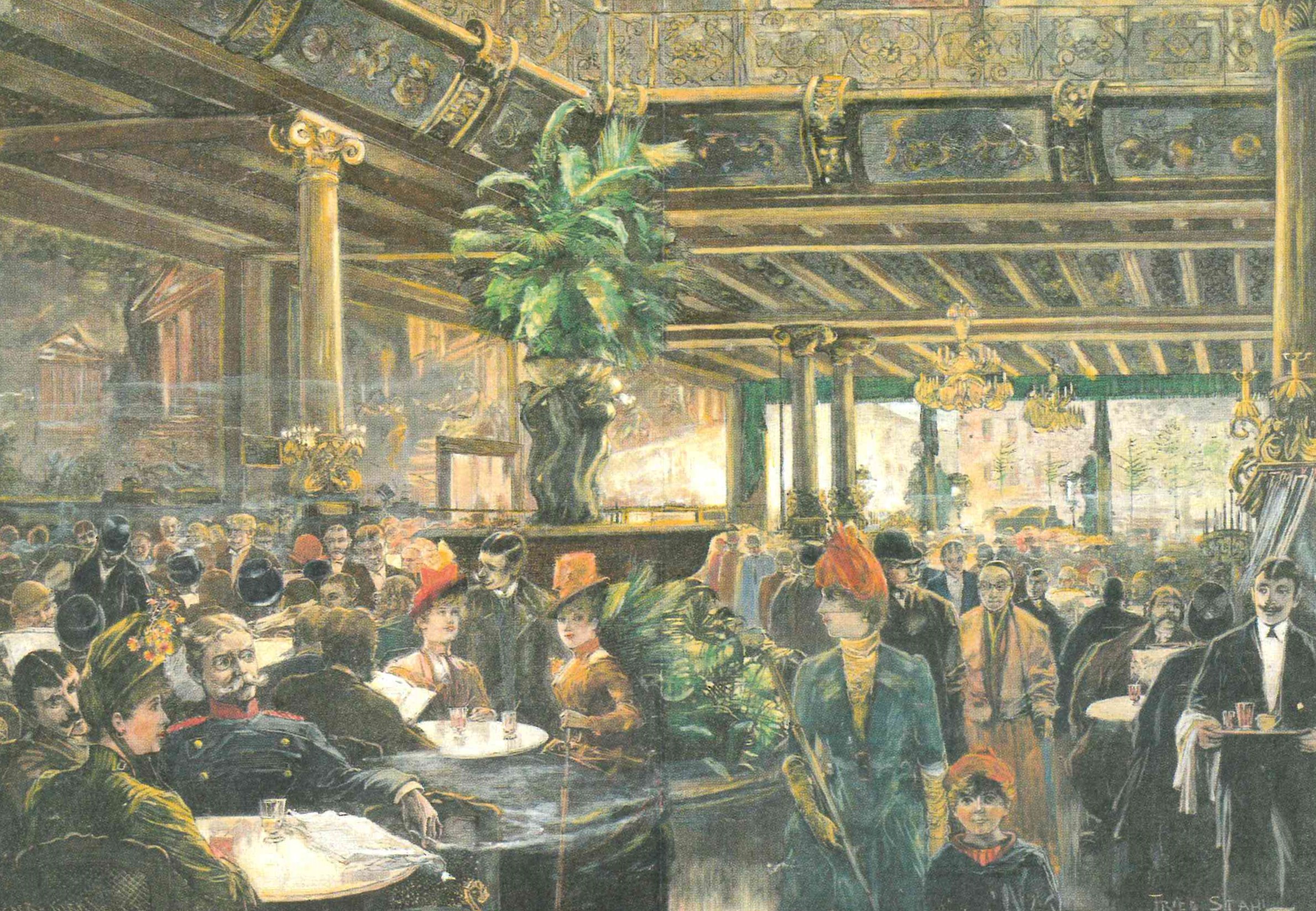
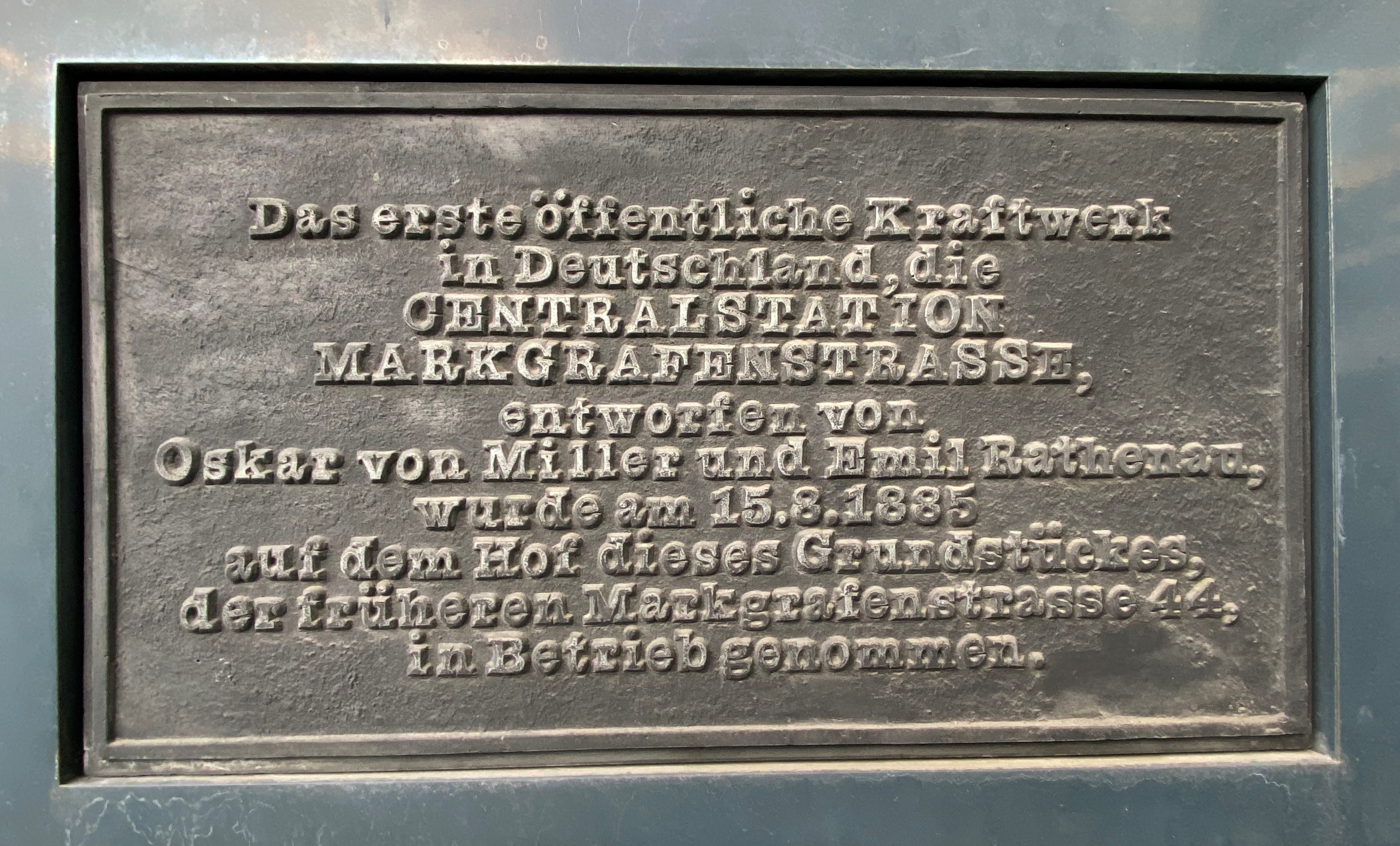


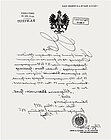





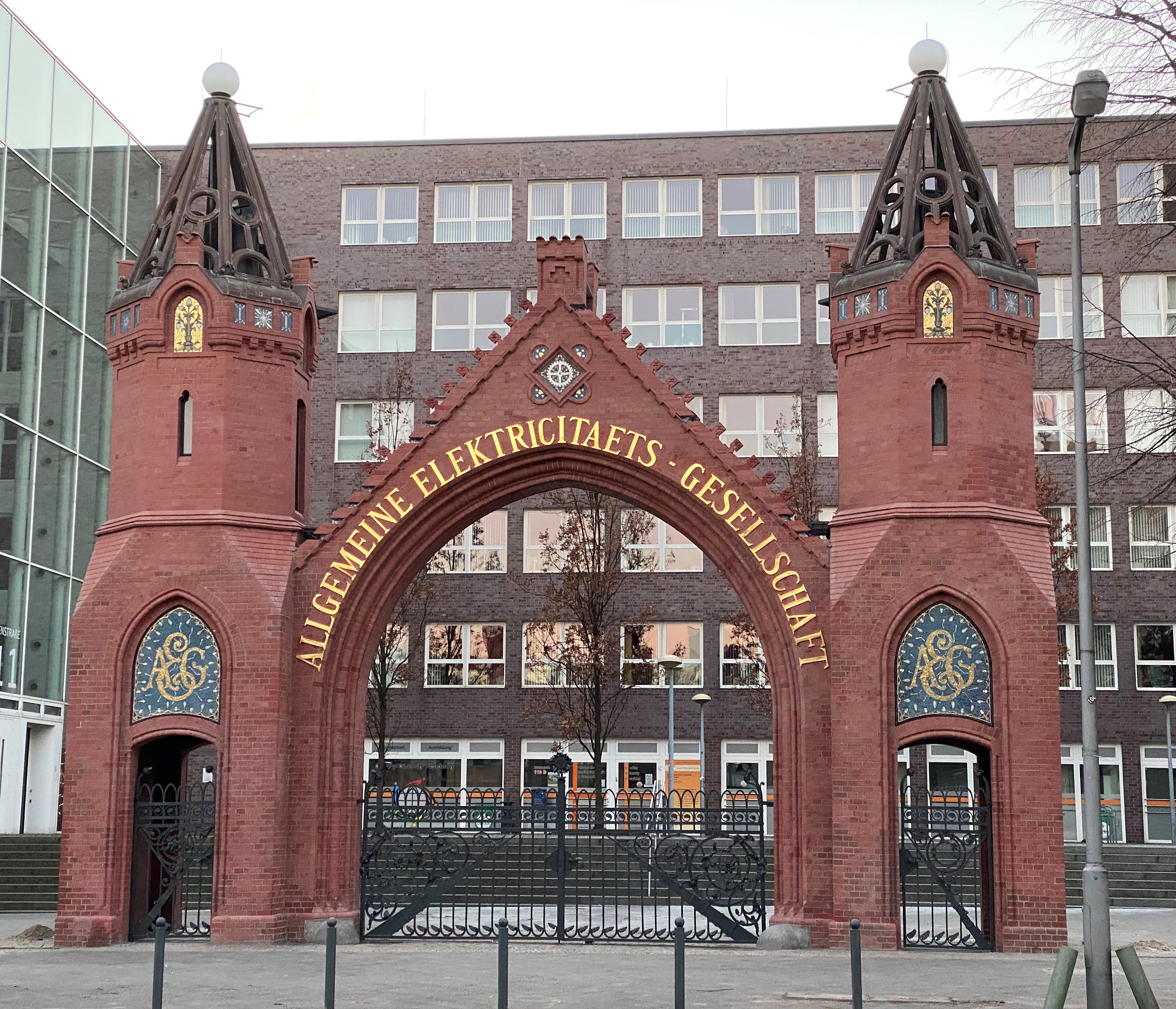
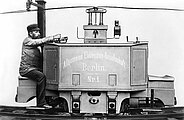
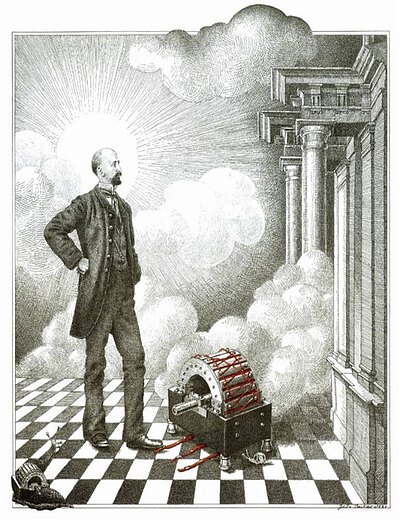
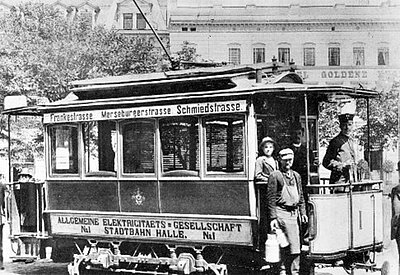
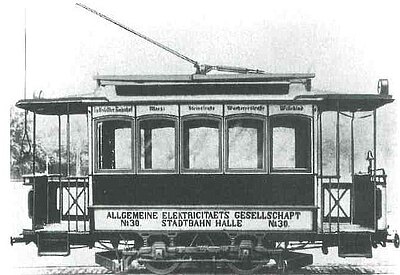
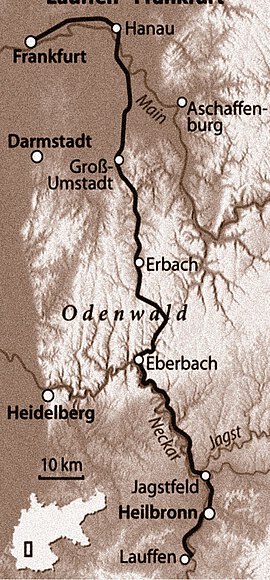








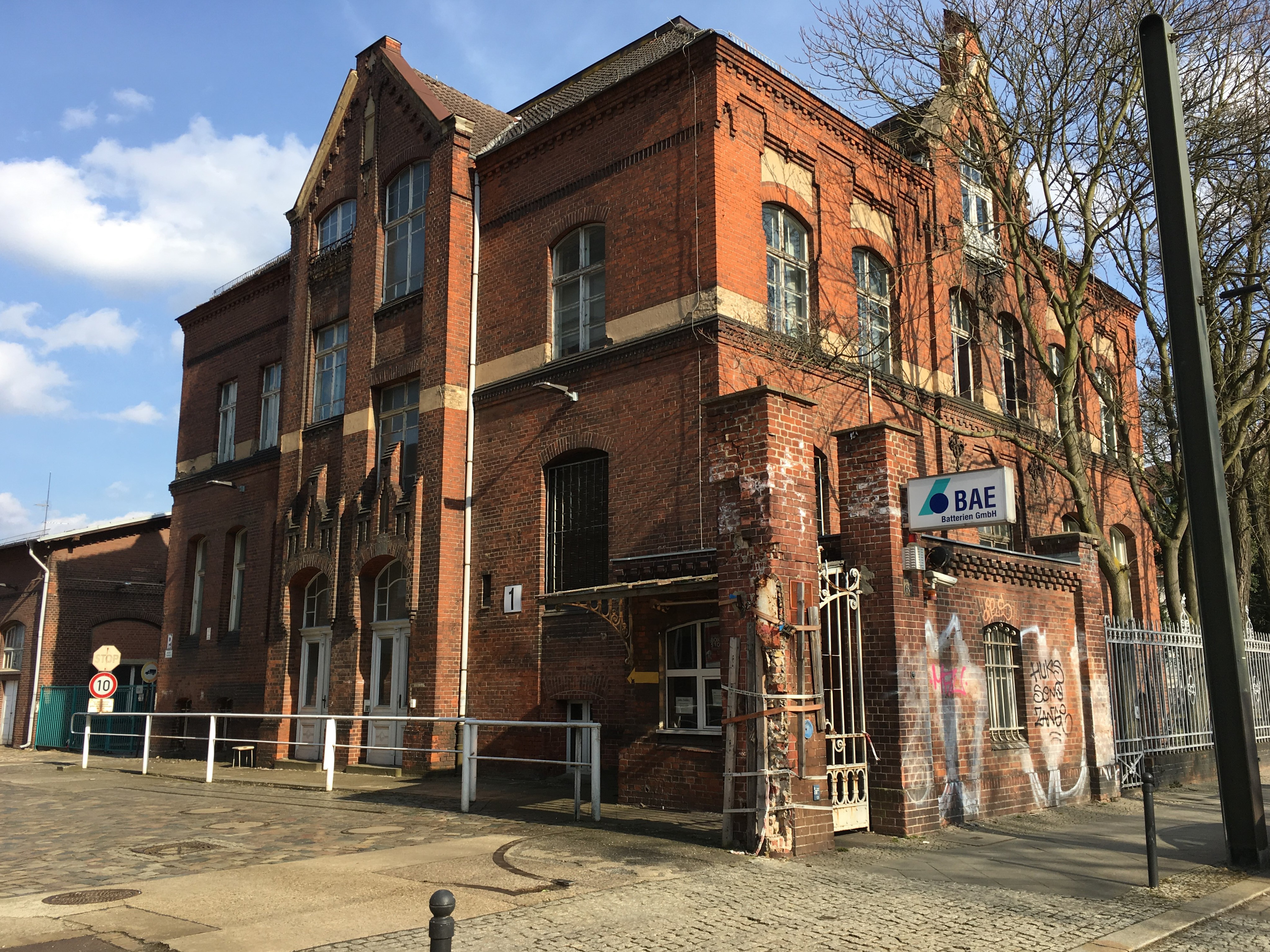

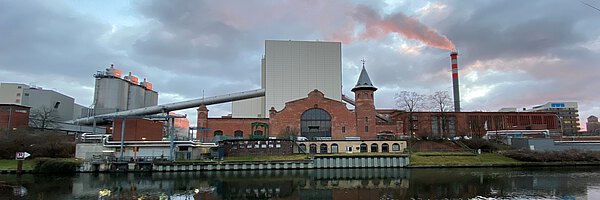

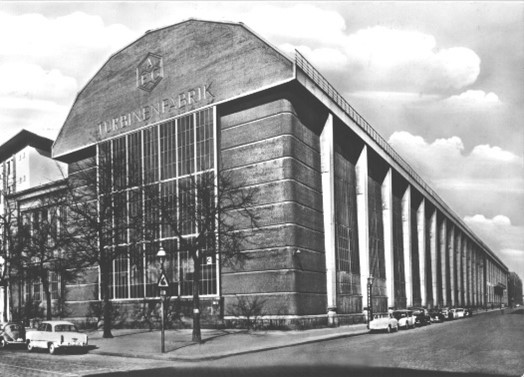

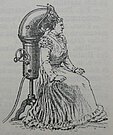




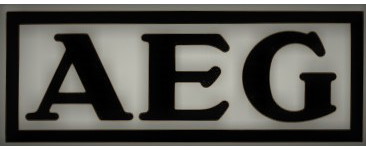
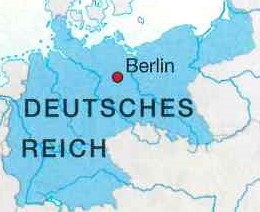
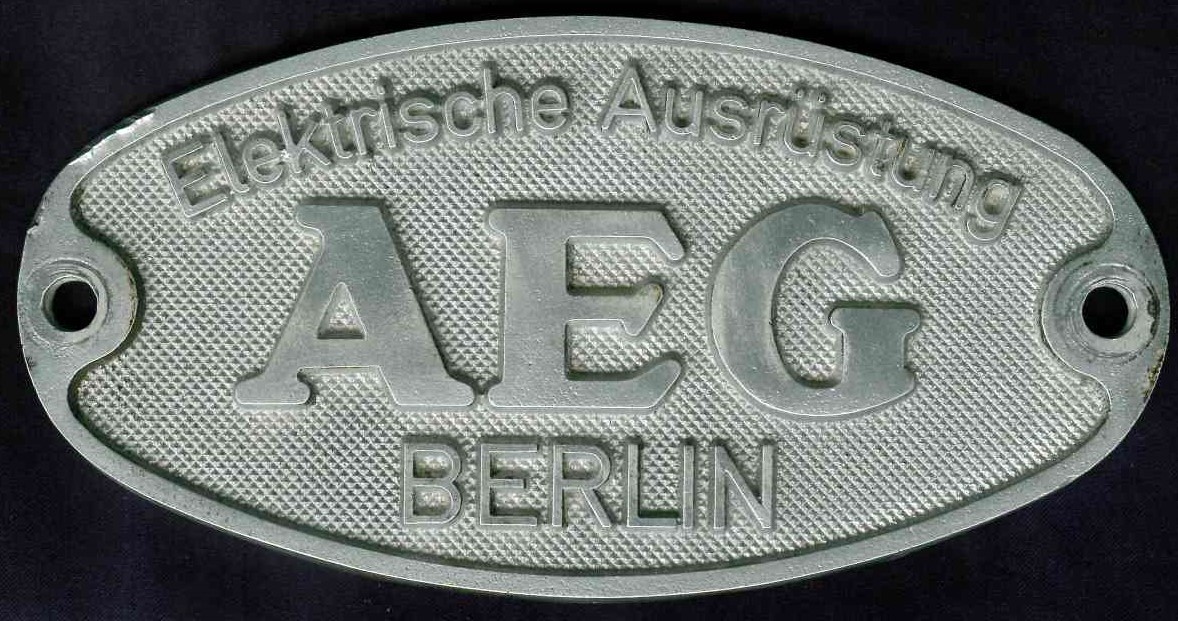

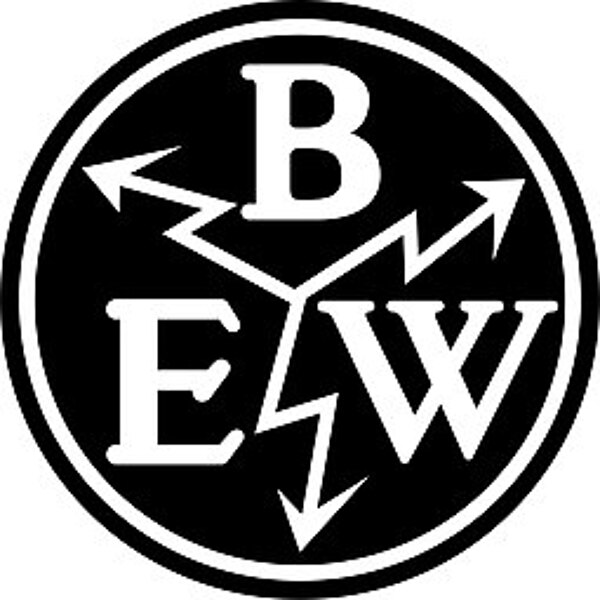
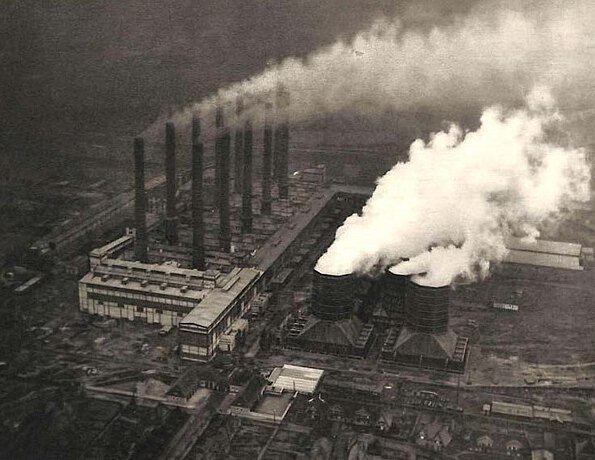
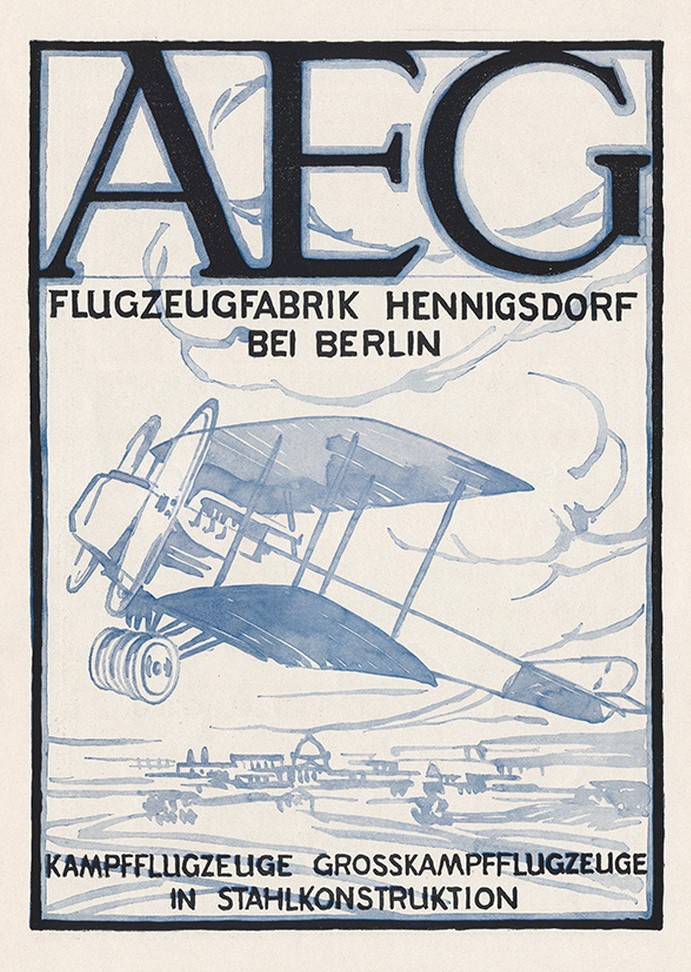
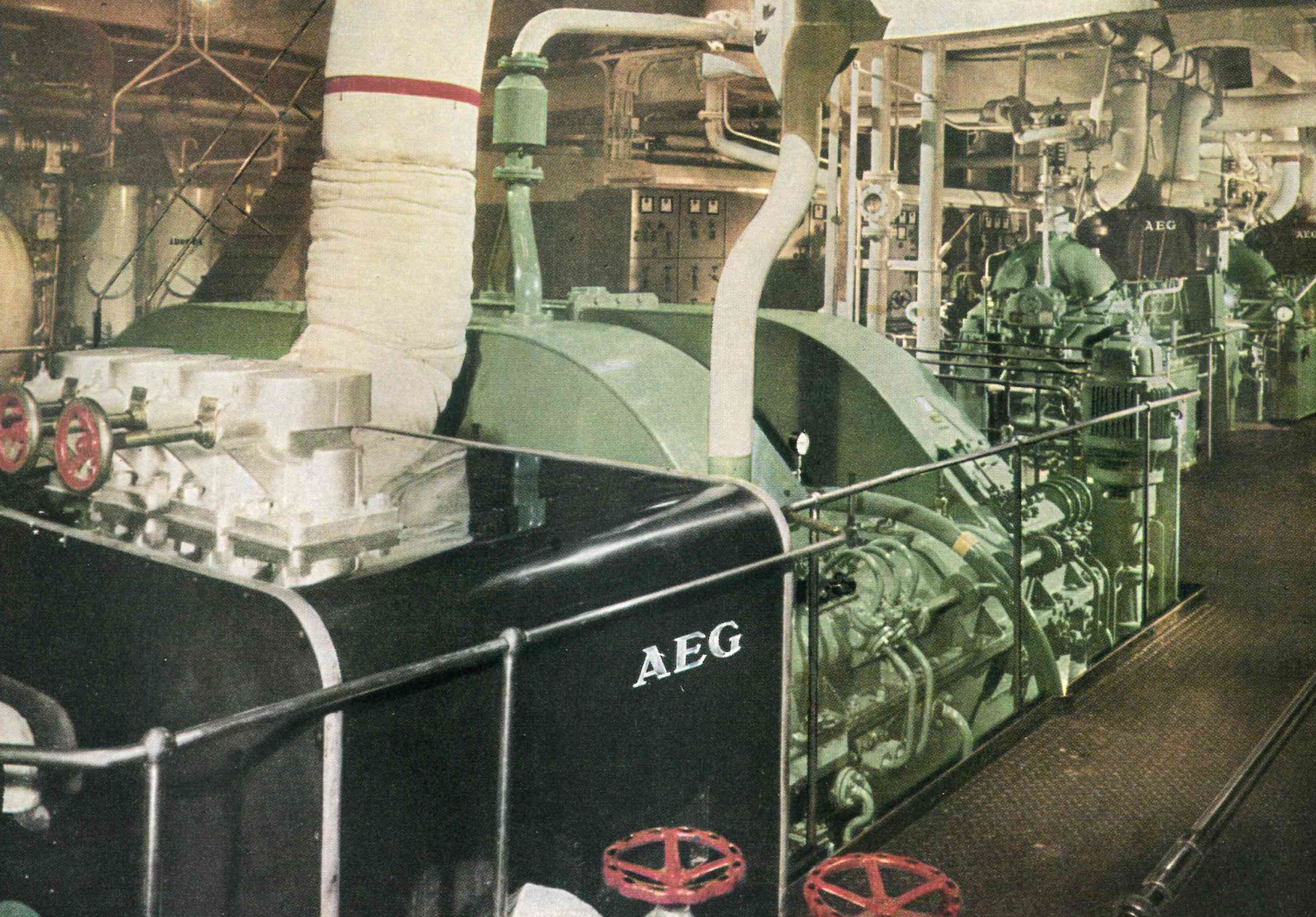

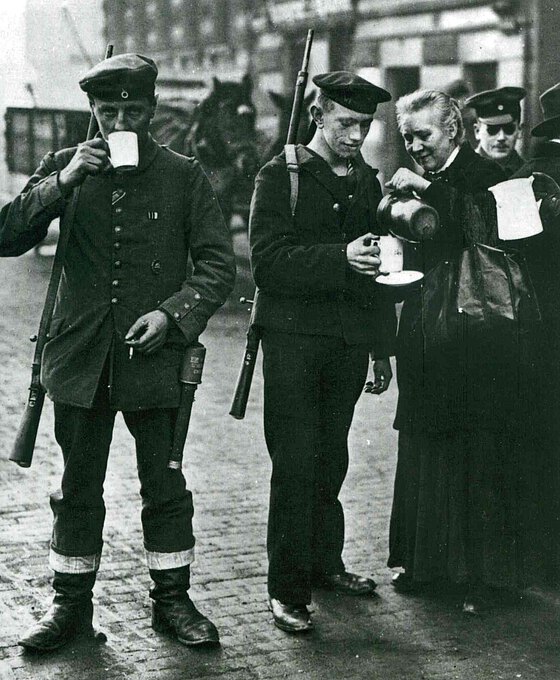
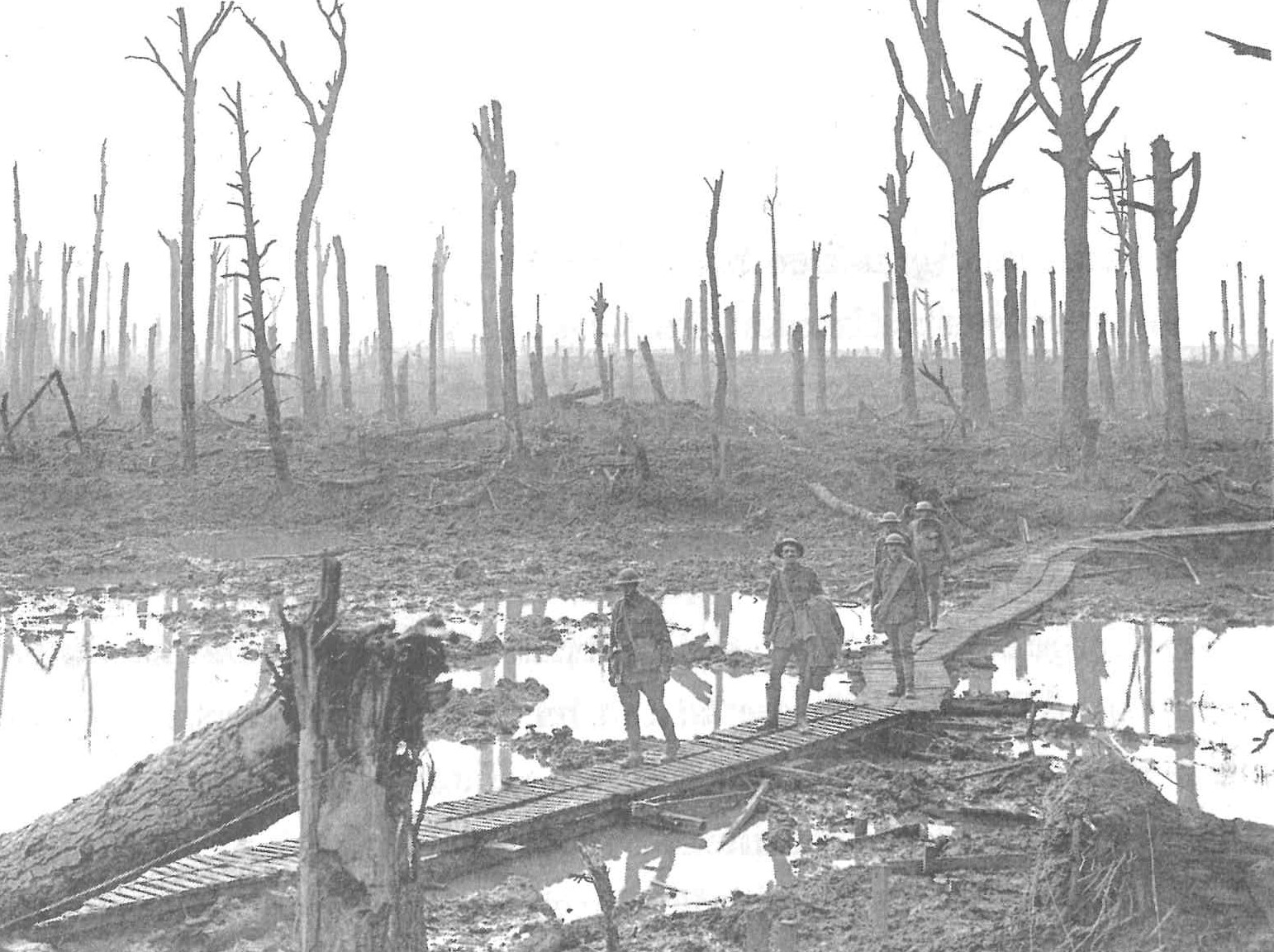
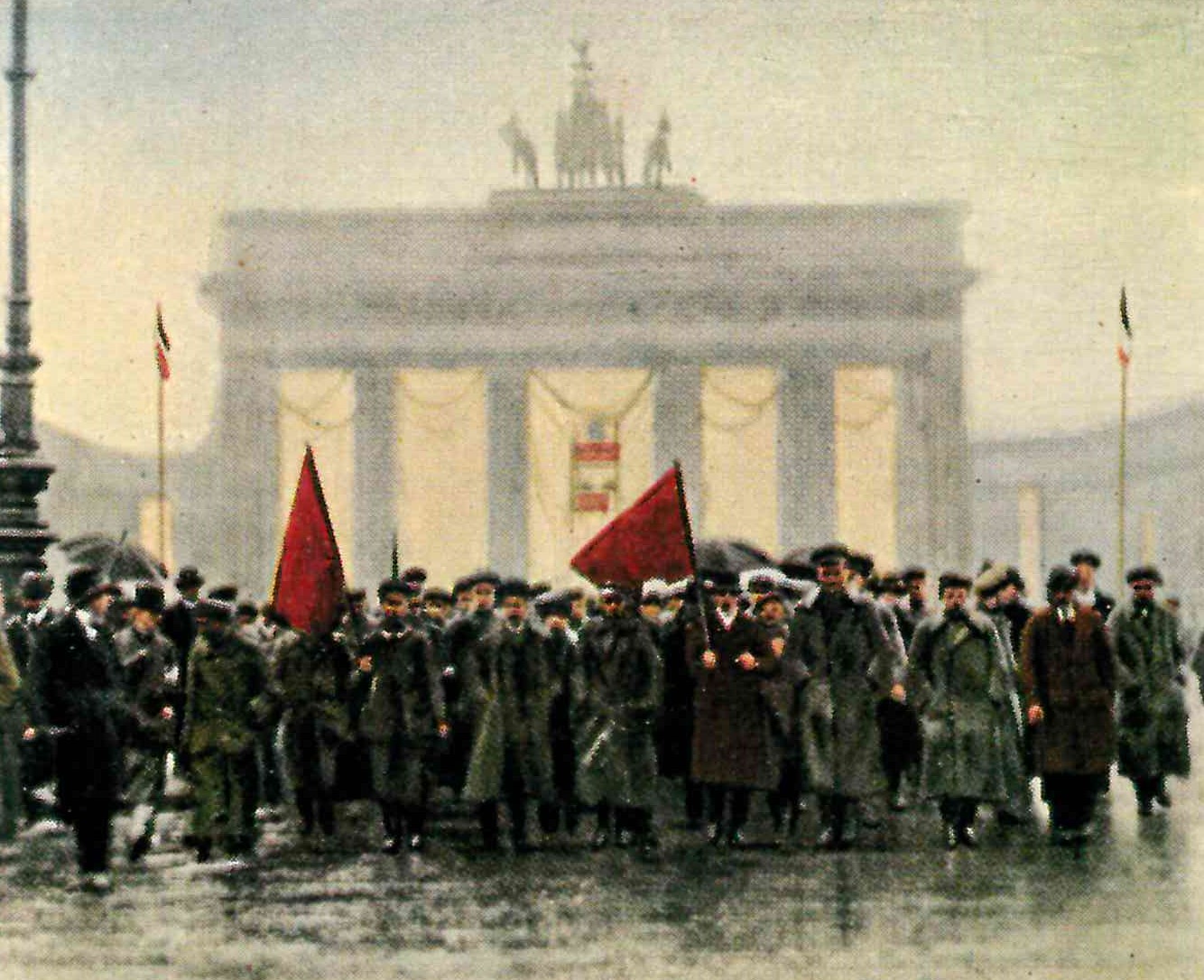
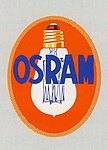
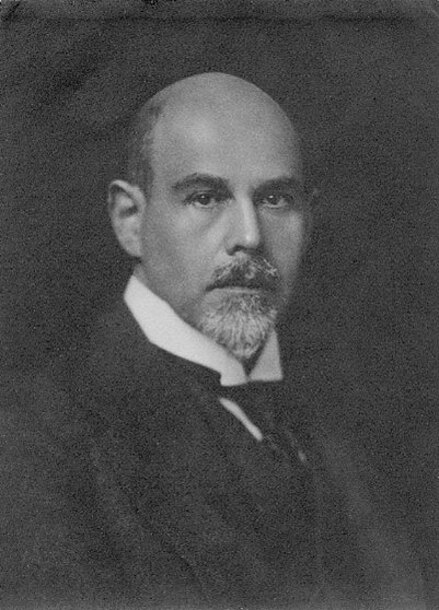
![[Translate to English:] Konferenz von Genua und Vertrag von Rapallo](/fileadmin/_processed_/5/6/csm_Bild42e_f857c35c8e.jpg)
